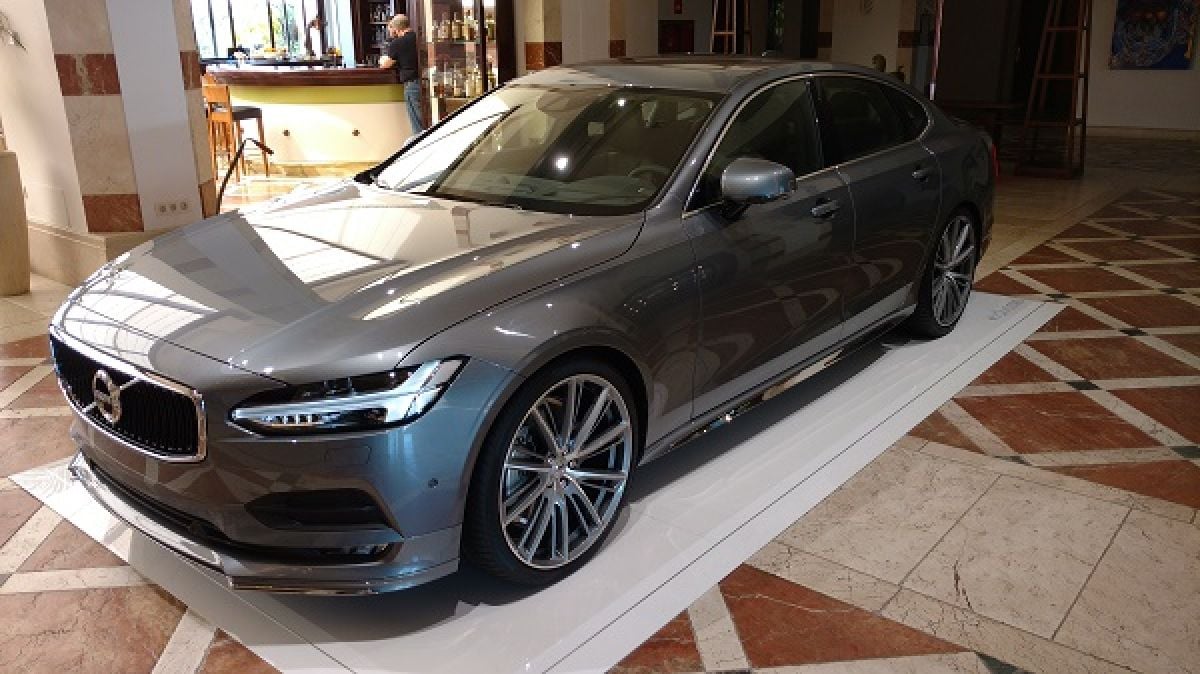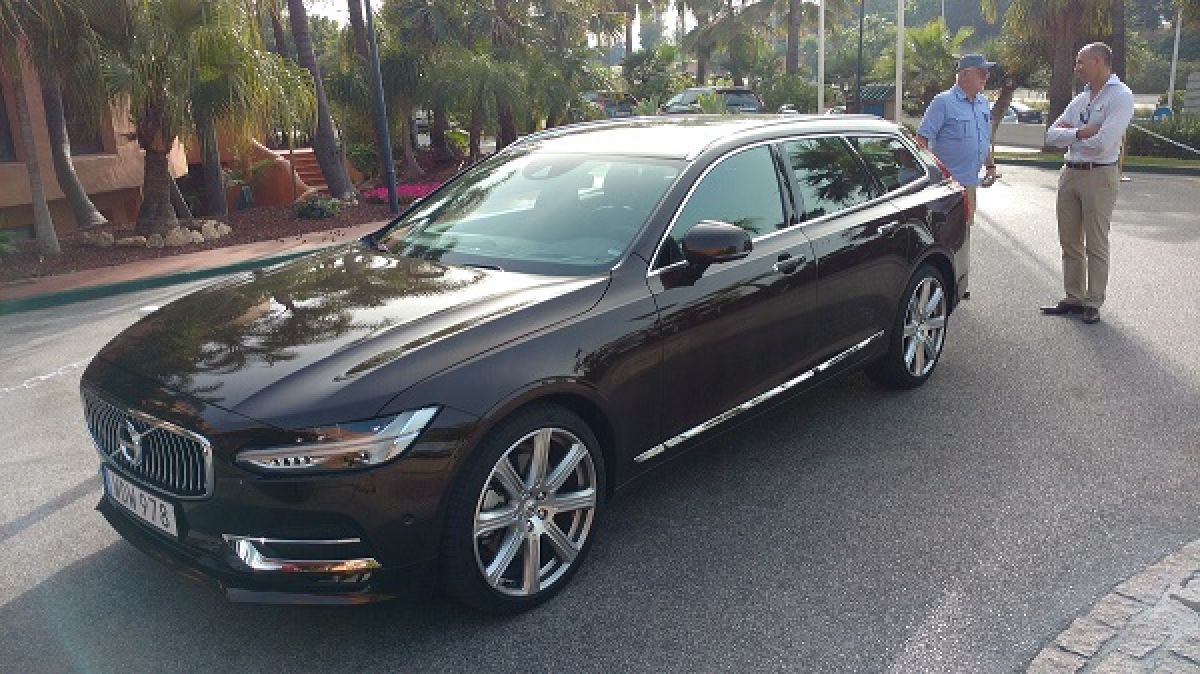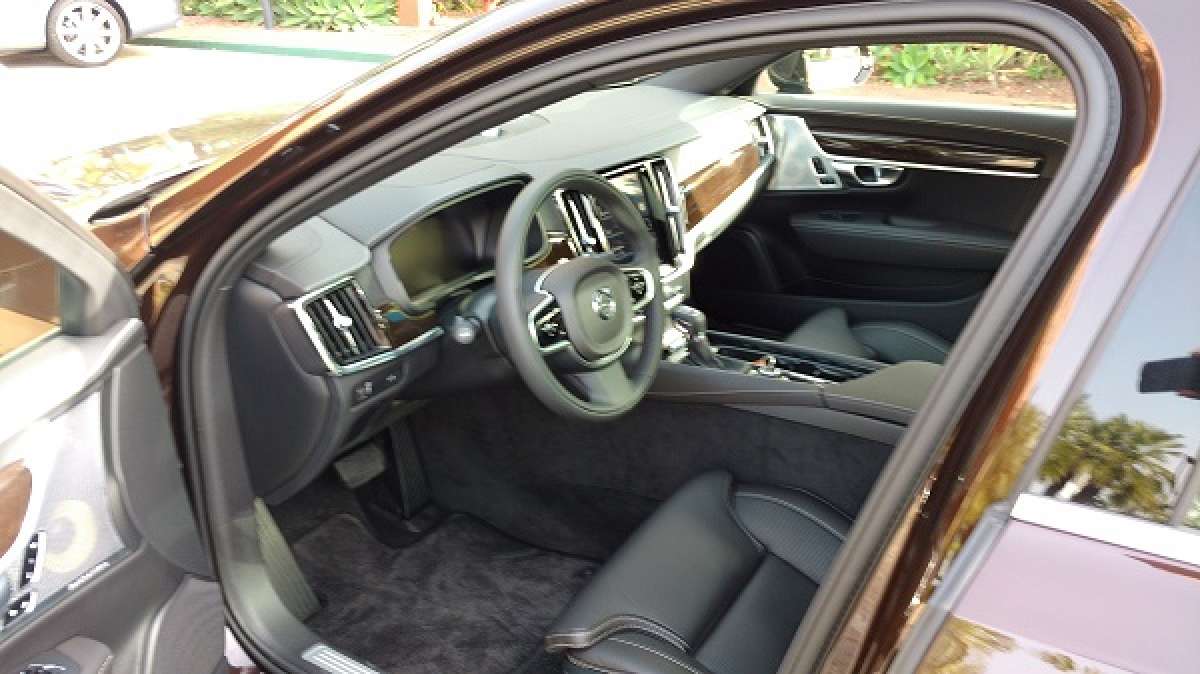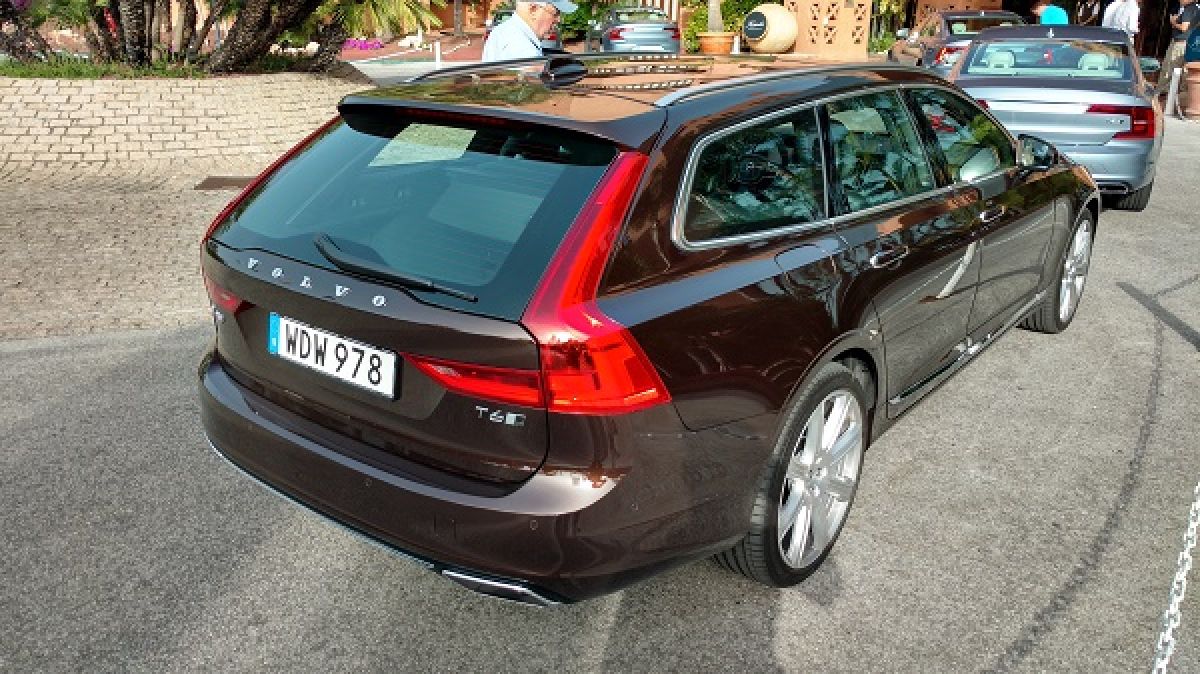The introduction of Volvo’s latest wagon incarnation may spark a return to the station wagon movement in the United States. While any mass consumer exodus from the crossover, SUV craze is doubtful, my recent experience behind the wheel of the all new Volvo V90 Estate was an exceptional, surprising one. Read our initial drive review of the all new S90 4 door premium sport sedan here.
3 inches shorter than the S90 Sedan
Exhibiting measurable sport-wagon road dynamics, and the versatility of many, much larger 5-door crossovers, this premium estate wagon may be a very viable answer for consumers wishing to opt out of the SUV buying trend, yet retain the versatility and cargo capacity of the aforementioned.
Larger than the current V70 wagon, yet much lower to the ground than the XC90 SUV, the V90 is Volvo’s version of the European sport wagon, and handily takes on BMW and Mercedes with a lower MSRP, and exceptional fuel efficiency -- thanks its low friction, direct injected 2 liter turbocharged gasoline engine.
V90’s bodyline is crisp bordering on minimalism, exhibiting just enough bling to set this Volvo apart from the crowd, while capturing the imagination as to exceptional, good things to come.

This wagons fit and finish is impressive, as is the visual and sensory stimulating environment of V90s interior. The touch and sensory experience is premium, the environment; one of well earned upper crust arrival. Volvo’s newest wagon will easily double as a family workhorse or valet parked town car. Volvo believes that consumers will purchase V90 as a well deserved self reward.
V90 performs when coaxed a bit
Although not a high performance wagon per sae, it is exceedingly comfortable, thanks to arguably the best made driver’s seat in the segment, features a tablet-sized dash mounted touchscreen monitor, premium sound and entertainment system options, decent personal electronics connectivity and a historically correct standard featured Volvo safety, including “large animal detection” accident avoidance. Note: When option equipped to do so, this Volvo will, with the occasional touch of the wheel, self drive up to 80 KPH..
In short, there’s nothing stodgy or old-school about Volvo's latest estate wagon incarnate. Sharing an automotive architecture with the well received XC90 SUV, and the S90 Sedan, the V90 Estate gives the best that Europe and Asia have to offer, a run for the dollar spent, and comes to the midsize premium car segment with an anticipated top in class fuel efficiency --thanks to Volvo engineering’s dedication to small displacement, high power yield 4-cylinder gasoline engine technology.
V90 T5 is anticipated to exceed 30 MPG highway in non-hybrid trim
When V90 arrives in the U.S. sometime in early 2017 as a 2018 model, Volvo engineering informs us that the turbocharged, 6-speed automatic, front wheel drive variant should approach or exceed 24 MPG City and 30+ MPG Highway (not confirmed) with the high output supercharged/turbocharged T6 losing 1 to 2 mpg in all-wheel drive trim.

We of course are waiting for a T8 hybrid version, and in looking to the stellar XC90, look forward to experiencing one behind the wheel. While in Spain I drove an up-trim level V90 T6 Inscription estate wagon and was hard pressed to detect any discernible drive-dynamic difference between the wagon and the premium S90 sedan -- other than just a tad of “heaviness” in the wagon’s general handling feel.
Seriously, If I hadn’t just put 200 miles or so in the seat of the S90, I wouldn't have noted any measurable difference between the two, other than a very cool looking lift-gate
In pushing the V90 well beyond the posted speed limits of the region, V90 handled the twisty two lanes as well as the sedan, and then settled into a very premium drive and ride experience. The cabin is quiet and comfortable, well appointed, and very intuitive as to its car-human interface and infinite personal electronic connectivity.
I further enjoyed the “one with the road” seating position, and near V8 seamless torque transferred to the road through a very user friendly 6 speed automatic transmission, variable drive mode interface. Braking was positive, yet not grabby, as I held the line through a tight swooping uphill.

The seat while lightly bolstered held this driver firmly, while allowing for near infinite seat/back and lumbar support adjustability. Admiring the posh combines of what Volvo refers to as a “Swedish sanctuary,” on the completion of what seemed like a very short drive, I exited this wagon with little to no fatigue. If I was to modify anything in this Volvo, it would be to firm up the steering feel just a tad, I’s appreciate just a little more ‘car to road’ feel.
This euro-wagon is a looker, and begs to be personalized
Actually, the young journalist in our group praised the look and curb appeal of Volvo’s latest wagon incarnate. Although family friendly, there’s something very appealing here. Presenting crossover, SUV-like utility, while preserving a car’s lower body-line and subsequent road handling dynamics, may be key to V90 sales success in North America. In a year that finds Chinese owned Volvo Motors recording double digit growth, I believe that this maker just hit yet home run.

Will the Volvo V90 estate wagon dampen the crossover/ SUV buying trend in North America, compelling other automakers to manufacture a midsize of larger wagon? Only time will tell. With an estimated beginning MSRP of $48,000 +, and a top trim variant crossing the $60,000 barrier, most consumers won’t be lining up to purchase Volvo’s premium estate wagon.
But then again, many import and domestic truck based crossover/SUVs approach $70,000 -- Volvo believes that a niche exists in North America for its latest manufactured in Sweden 5 door, I agree.











